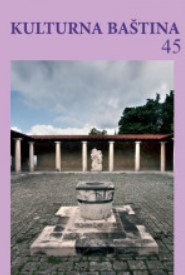UGARSKI DOMINIKANAC IVAN DE BUZAD – BISKUP SKRADINSKI (1250. – 1266.) I NADBISKUP SPLITSKI (1266. – 1293./94.)
THE HUNGARIAN DOMINICAN IVAN DE BUZAD – BISHOP OF SKRADIN (1250-1266) AND ARCHBISHOP OF SPLIT (1266-1293/94)
Author(s): Ivan ArmandaSubject(s): Christian Theology and Religion, History of Church(es), Local History / Microhistory, 13th to 14th Centuries
Published by: DRUŠTVO PRIJATELJA KULTURNE BAŠTINE - SPLIT
Keywords: Ivan de Buzad; Dominican order; Skradin diocese; Split archdiocese; Split metropolis; Trogir diocese; Šibenik;
Summary/Abstract: Research into historical sources has led the author of this paper to conclude that Ivan Ugrin, Bishop of Skradin, was the same person as Ivan de Buzad, Archbishop of Split. In the light if this discovery the author decided to undertake a critical analysis of his work and life. After an overview of historiographies and historical sources referencing him, the author discusses Ivan de Buzad’s origins and his monastic affiliation, refuting the claim that he belonged to a Franciscan order and proving instead that he was a Dominican monk. The author proceeds to discuss his service as Bishop of Skradin (1250-1266) and Archbishop and Metropolitan of Split (1266 -1293/94). His role in the ecclesiastical and social life of Split is described, and his role in the conflicts between the dioceses of Šibenik and Trogir is analyzed in detail. His relationship with suffragan dioceses is presented in overview. In addressing the question of metropolitan synods believed to have been organized by Archbishop Ivan, the author refutes the claims that there have been two or three synods and proceeds to prove that Archibishop Ivan organized only one Synod of Bishops in 1292. In conclusion, the author attempts to determine an approximate time of his death.
Journal: KULTURNA BAŠTINA : ČASOPIS ZA PITANJA PROŠLOSTI SPLITSKOGA PODRUČJA
- Issue Year: 2019
- Issue No: 45
- Page Range: 7-36
- Page Count: 30
- Language: Croatian

